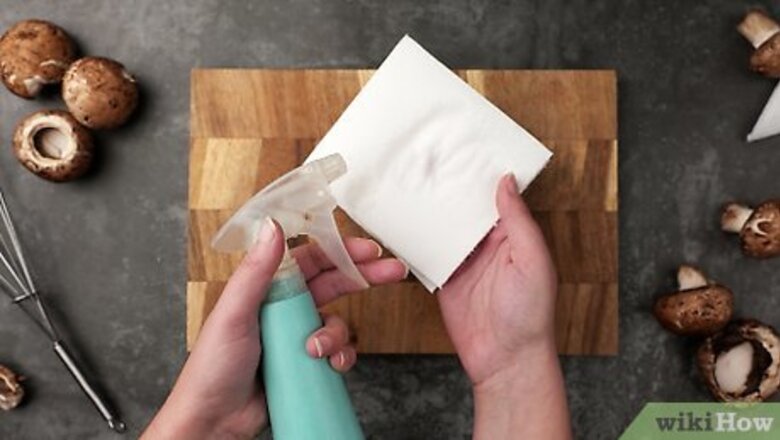
views
- Wipe dirt or debris of the mushroom by gently brushing it with a damp paper towel or food brush, then set them on a towel to dry.
- Trim off the stem of the mushroom, scrape away the inside gills with a spoon, then slice off the edge of the cap.
- Refrigerate portobellos in a breathable (not airtight) container for up to 3 days.
Wiping the Mushroom Clean
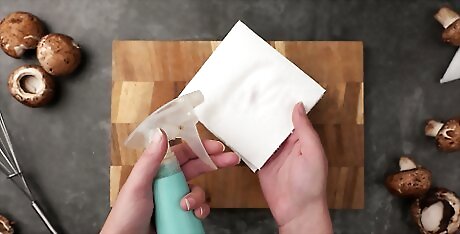
Wet a folded paper towel with cool water. Wring out the excess water so that the paper towel is just slightly damp. In most cases, a little bit of moisture is all you'll need to clean a freshly picked and packaged portobello. Because of the size and anatomy of portobello mushrooms, they should be cleaned individually to ensure that the receive adequate attention. You can also use the soft side of a kitchen sponge.
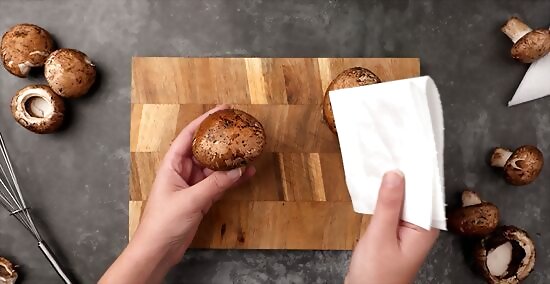
Scrub the cap and stem of the mushroom gently. Go over the outer surface of the portobello with the damp paper towel using smooth, quick strokes. Be careful not to apply too much pressure, or you could damage the mushroom, causing breakage or squishy bruised spots. Let the mushroom rest in your palm rather than grabbing it by the cap or stem. Pay particular attention to areas where dirt and debris is heaviest.
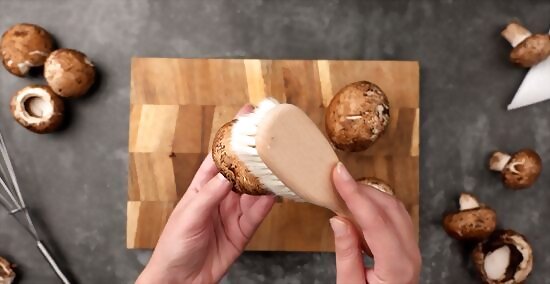
Use a mushroom brush to clean especially dirty mushrooms. There may be times when a paper towel won't be enough to clear away every last trace of dirt. A soft-bristled brush will allow you to remove more dirt and grit from the surface of the portobello without the need for a lot of soaking or rinsing. Mushroom brushes can usually be found at culinary specialty stores, as well as most supermarkets. Soaking mushrooms causes them to wick up water like sponge, which can dull both their flavor and texture.

Set the portobello aside to dry. Place the clean mushroom on a layer of paper towels. If you're preparing multiple mushrooms, move onto the next one. Continue cleaning the portobellos individually until you have as many as you need. The paper towels will absorb whatever added moisture happens to leach out of the mushrooms. Only begin preparation when the mushrooms are completely dry so you can get a sear and avoid mushiness.
Trimming the Mushroom

Remove the stem. The easiest way to do this is to simply grip the stem by the bottom, then give it a twist and pull sharply. It should pop right off with little resistance. You can also use a paring knife to cut the stems free. The stems of portobello mushrooms tend to be tough and woody, and are best left out of most recipes. If you don't want any part of the mushroom to go to waste, you can save and reuse the stems by finely dicing them and using them to flavor stocks, stews or sautés.
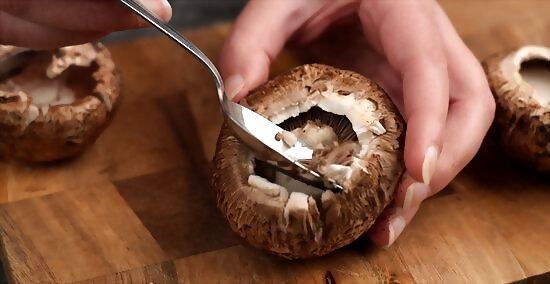
Scrape away the black gills. Turn the mushroom over to expose the underside of the cap. Rake the tip of a spoon over the meshy gills until they come loose. Wipe the underside of the cap with a damp paper towel to clear away any remaining bits. These gills have a bitter, unappetizing taste, which can negatively affect the flavor of the finished dish.

Slice off the inner edge of the cap. After scraping out the gills, you may notice a narrow lip on the underside of the cap. Run the edge of a sharp knife around this lip while rotating the mushroom slowly. When you're done, you should be left with a smooth cap that's flat on one side and rounded on the other. Removing this lipped edge will allow the cap to lie flatter, which will be helpful if you plan on grilling or stuffing the mushrooms. This is an optional step that will primarily enhance the presentation aspect.
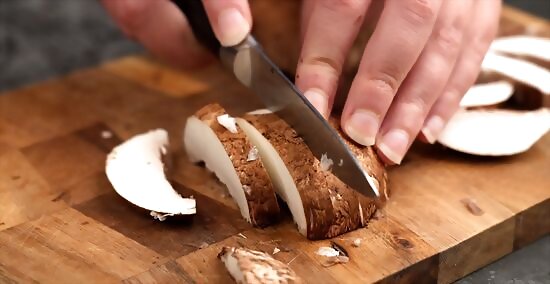
Cut the mushroom as desired. The portobello is now ready to be prepped for the dish you're putting together. For soups and vegetable medleys, you can slice larger mushrooms into cubes or thin strips to make them more manageable. When it comes to portobellos, no cutting is necessary—many chefs prefer to leave the mushroom whole for steaming, grilling or frying to preserve its hearty flavor and texture. Lightly brush portobello caps with olive oil, sprinkle them with kosher salt and bake them for a veggie-friendly alternative to sandwich buns.
Storing Portobello Mushrooms
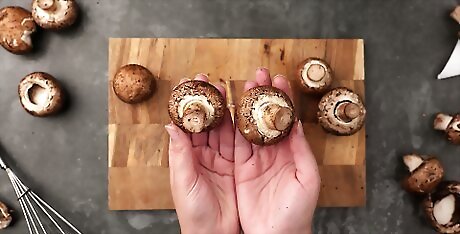
Check to make sure the portobellos are fresh. Before you buy, inspect the cap and stem for any unsightly bruises or blemishes. These may indicate that the mushroom is past its prime. A good portobello will be between 4 and 6 inches in width, firm to the touch and have a uniform color. If possible, buy your portobellos separately from a loose bin rather than in a package. This way, you can handpick the best looking mushrooms. The condition of the gills can also be a telling sign. If the gills appear moist, slimy or shriveled, the mushroom is likely old.
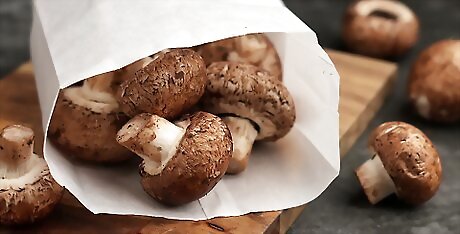
Refrigerate uneaten portobellos in a breathable container. Take the portobellos out of their original packaging as soon as you get home and transfer them to a paper bag or sheet of paper towels. Mushrooms give off moisture as they sit. When left in plastic, this can cause them to turn soft and spongy. Proper ventilation is key to ensuring that the portobellos stay fresh until you're ready to use them. You can also trim and wrap the caps in a double layer of damp paper towels.

Use the mushrooms within three days. Portobellos, like most other fresh produce, will be best when utilized right away. Always examine mushrooms carefully before putting them in the food you eat. If they appear colorless, feel mushy or develop a questionable smell, play it safe and throw them out. It's usually best to buy ingredients like mushrooms fresh whenever you need them. In rare instances, portobello mushrooms may last for up to a week when stored properly.














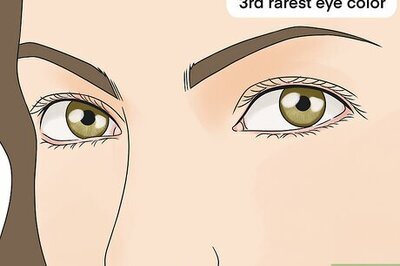

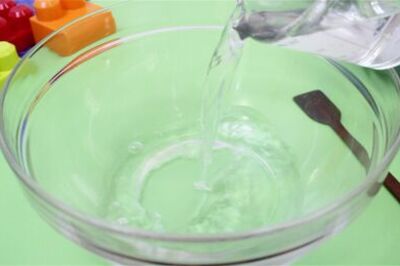


Comments
0 comment